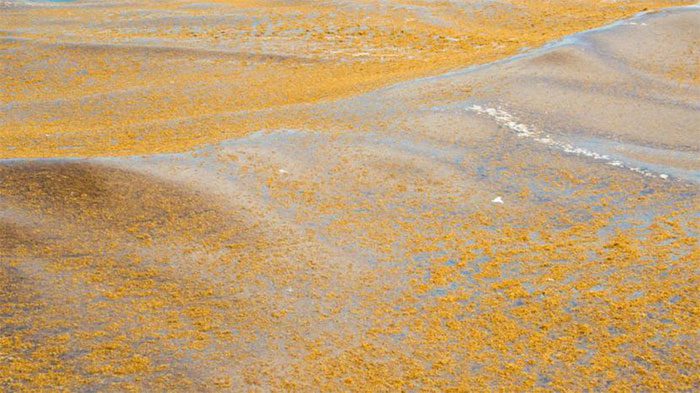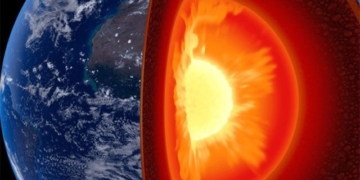Approximately 8.7 million tons of sargassum, also known as “golden tide,” are accumulating in the Atlantic Ocean and producing a foul odor as they drift towards the state of Florida, USA.
Sargassum is a genus of brown macroalgae (seaweed) found in temperate and tropical oceans worldwide. It is commonly referred to as golden tide.

“Golden tide” sargassum – (Photo: SHUTTERSTOCK).
This type of seaweed forms massive mats, resembling floating islands that can stretch for miles. These mats serve as a habitat and food source for birds, fish, sea turtles, and crustaceans.
Additionally, it is the exclusive “home” to certain species such as the sargassum fish. Typically, when these “seaweed islands” become too heavy, they sink to the ocean floor, becoming a primary food source for deep-sea creatures.
However, in recent years, sargassum has become increasingly nomadic as ocean temperatures rise, allowing it to thrive in unfamiliar waters. Its growth has also been fueled by climate change and nutrient runoff from the Amazon and Mississippi Rivers.
The sargassum mass currently drifting towards Florida could emit a smell detectable from miles away, due to the potent mix of rotten egg odor (hydrogen sulfide) overlaying the salty sea scent. As it decomposes, it releases carbon into the atmosphere, contributing to the already high levels of CO2 emissions on the planet.
2022 marked a record-breaking year for sargassum, and 2023 has proven even more intense as old seaweed serves as a seedbed for the next crop.
According to Southern Living, the vast amount of sargassum currently dominating the Atlantic has doubled over two consecutive months, now totaling approximately 8.7 million tons.
Tom Mahady, the ocean rescue director for Boynton Beach, Florida, told USA Today: “Our beach is being inundated by a massive algae blanket the size of a shopping mall. It’s not pleasant at all!”
Elsewhere in the world, scientists are striving to develop sustainable methods to address the “golden tide” of sargassum.
“This type of seaweed is rich in nutrients, so it makes sense to convert it into useful products. However, this conversion requires pulling it from saltwater, rinsing it with freshwater, and drying it. This process is quite costly,” said Professor Mike Allen from the University of Exeter and Plymouth Marine Laboratory, who leads a processing project, in an interview with The Guardian.


















































